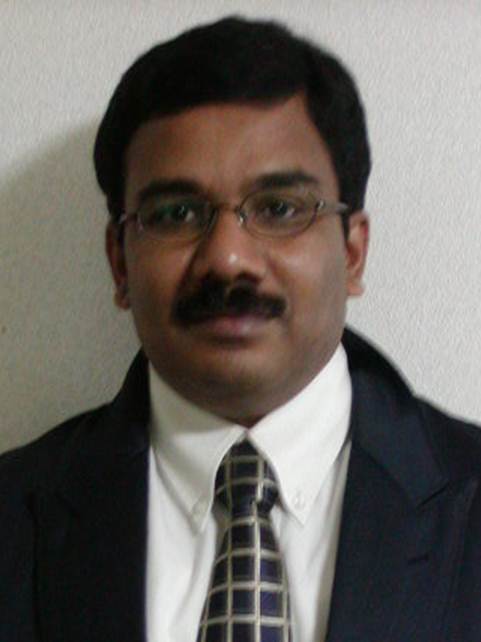Editor Profile

Senthil Kumar Kurunthachalam
University/Organization: Sadara Chemical Company
Country: Saudi Arabia
Biography
Dr. Senthil Kumar Kurunthachalam presently working as an Analytical Sciences and Technology Specialist in Sadara Chemicals in Kingdom of Saudi Arabia and also trained in Dow Chemicals in Freeport, Texas USA especially in Advanced Training Center, Labs 1218-1225 in Plant B for a year. He is dealing on petrochemical central analytical lab operations such as separations, gas chromatography, liquid chromatography, gel permeation liquid chromatography and ion chromatography for various petrochemicals etc., He was a research scientist for Savannah State University, Savannah GA, USA from 2006-2009. He ran a private consulting (EMME Consultancy, http://www.emme-consultancy.com/) in India which related to environmental monitoring, fate analysis, pollution, human health effects and did multiple collaborative research with National Institute of Advanced Industrial Science and Technology (AIST), 16-1 Onogawa, Tsukuba, Ibaraki 305-8569 Japan, Savannah State University, Savannah, GA, USA, Wadsworth Health Center, Albany, New York, USA, Estonia Research Lab at Estonia, Canadian Artic Research Group in Canada and Bharathiar & Patna University, India in between 2010-2013. Dr. Senthil Kumar also work as a visiting professor in Avinashilingam University, Coimbatore 641043, Tamil Nadu, India (2012) & Senior Manager for the analytical operations in the TUV-SUD South Asia (a German based company 2009-2010), Bangalore, India. In addition, after completion of his second higher education Dr. Senthil Kumar also works as a postdoctoral research fellow at Yokohama National University, Yokohama, Japan (2000-2002) especially on global monitoring of dioxins, furans and PCBs and as a Technical Scientist in Research and Development Team in Shimadzu Techno Research Inc., Kyoto, Japan (2002-2006). Dr. Senthil Kumar has a Ph.D. degree in grassland microbial ecology from Bharathiar University, India (1992-1995) and a second Ph.D. degree in environmental chemistry and ecotoxicology from Ehime University, Matsuyama, Japan (1995-1998). He has received international fellowships including the Monbusho and Japan Society for the Promotion Sciences (JSPS). He is advising member of the United Nations Environment Program (UNEP)’s Global Monitoring Network (GMN) from 2001 particularly on Persistent Organic Pollutants (POPs). He also work on pharmaceutical drugs, perfluorinated compounds, brominated flame retardants, chlorinated and brominated dioxins, organochlorine pesticides, polychlorinated biphenyls, antibacterials (triclosan, triclocarbon), phthalates, disperse dyes, polycyclic aromatic hydrocarbons, banned amines, chlorinated organic carriers, organotin compounds, chlorinated phenols, chlorinated benzenes, polychlorinated naphthalenes, chlorinated paraffins, and toxic pharmaceutical chemicals from biological and environmental samples collected from natural (aquatic ecosystem) and affected environments. He has published >80 peer reviewed articles including scientific papers, review, book and encyclopedia chapter & >85 publications in Organohalogen Compounds. He review articles from the journals Environmental Science and Technology (ES&T), Environmental Toxicology and Chemistry (ETC), Archives of Environmental Contamination and Toxicology (AECT), Bulletin of Environmental Contamination and Toxicology (BECT), Water Research, Comparative Biology and Physiology, Environmental International, Food Chemistry and Toxicology, Fish Physiology, Hazardous Materials, Journal of Environmental Quality, Chemosphere, Environmental Science and Pollution Research (ESPR), Environmental Pollution (ENPO), Marine Pollution Bulletin (MPB), Toxicological and Environmental Chemistry (TEC), Ecotoxicology and Environmental Safety (EES) etc., Dr Senthil Kumar also a editorial member for the Journal of Hydrology and Current Research, Journal of Environmental Chemistry and Ecotoxicology, Journal of Waste Water Treatment & Analysis, ISRN Environmental Chemistry and International Journal of Waste Resources.
Research Interest
1. Fate of organohalogens (Organochlorine pesticides [DDTs, HCHs, HCB, and chlordane compounds such as {cis/trans-chlordane, cis/trans-nonachlor, oxychlordane, heptachlor, heptachlor epoxide} cyclodienes {aldrin, dieldrin, endrin}, toxaphene, mirex]), Polychlorinated biphenyls (PCBs) and its hydroxylated metabolites (OH-PCBs), Chlorinated and Brominated Dioxins (PCDDs/PBDDs), Chlorinated and Brominated Furans (PCDFs/PBDFs), Brominated Flame Retardants (BFRs) such as Polybrominated diphenyl ethers (PBDEs) and its hydroxylated metabolites (OH-PBDEs), Polybrominated biphenyls (PBBs), tetrabromo bisphenyl A (TBBPA), hexabromocyclodecane (HBCD), polychlorinated naphthalanes (PCNs), Polychlorinated alkanes (PCAs), Polycyclic aromatic hydrocarbons (PAHs) and its hydroxylated metabolites (OH-PAHs), Fluorinated Organic Compounds (FOCs such as perfluoro carboxylic acids “PFCs†and perfluoro sulfonic acids “PFSs†and fluoro telomer alcohols[FTOHs]/aldehydes and Butyltin compounds “BTsâ€), antibacterial chemicals such as triclosan (TCS), triclocarbon (TCC), environmental hormones such as bisphenol-A (BPA), nonylphenol (NP), octylphenol (OP), phthalates, azo dyes (azo amines) in the environment. 2. Industrial chemical analysis. 3. Methodology Development of Emerging Toxic Chemical Analysis. 4. Food-web transfer of organic contaminants such as bio-concentration factor (BCF), bio accumulation factor (BAF) and bio-magnification factor (BMF) and biological metabolism. 5. Formation of chemicals in laboratory incinerator. 6. Sources, formation, human and wildlife exposure and intrinsic toxic effects.
 Scientia Ricerca is licensed and content of this site is available under a Creative Commons Attribution 4.0 International License.
Scientia Ricerca is licensed and content of this site is available under a Creative Commons Attribution 4.0 International License.